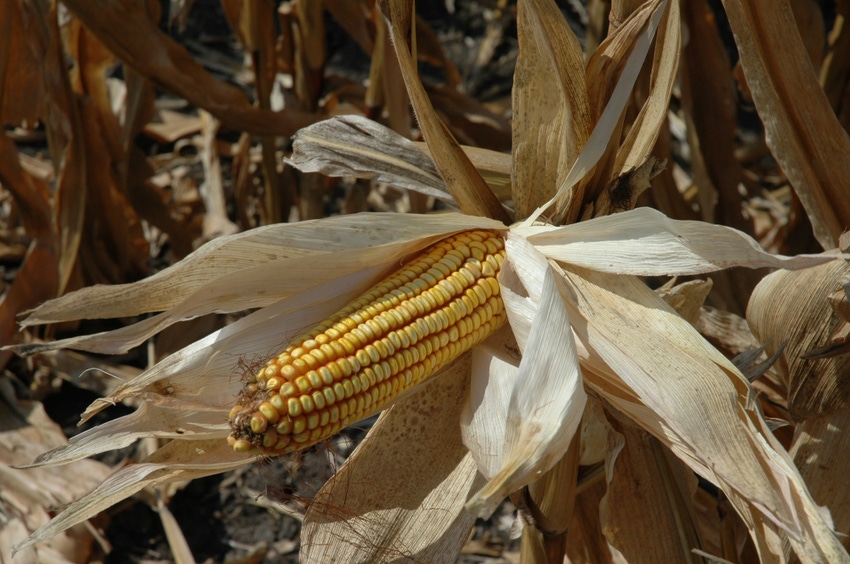
In spite of recent fluctuations in U.S. agricultural exports to the Far East, China remains the largest market for U.S. agricultural goods, according to the United States Department of Agriculture (USDA). Going forward, U.S. producers reading and following current and projected trade trends with China will benefit the most.
However, determining what those trends are remains the greatest challenge to U.S. producers who depend on global trade. And considering the current environment of trade challenges in recent years with China, that task may not be an easy one.
Last month, USDA released its Outlook for U.S. Agricultural trade, forecasting a rise in U.S. agricultural exports to $133 billion in 2017, up from $127 billion in 2016. In contrast, on the import side, USDA estimates a slight increase to $113.5 billion in 2017, up from $113.1 billion this year.
While the export projection for next year indicates an increase in export trade with China in 2017, the value of U.S. agricultural exports to China has fallen since it peaked in 2012 at almost $26 billion. The reason for the fall, according to trade economists, is largely a result of a strong U.S. dollar combined with China's slowing economy and growing stockpiles of agricultural goods, the result of Beijing's apparent attempt to support domestic producers through minimum purchasing prices. That move is credited with excessive stockpiling of cotton, corn, rice and wheat along with other commodities.
In recent months, however, it has become evident that China's desire to remain self-sufficient is a lofty goal, and one that may not be attainable in the foreseeable future. Since joining the World Trade Organization (WTO) shortly after the turn of the century, China's agricultural imports skyrocketed according to USDA statistics, spurred by their accelerated economic growth, rising middle-class incomes, changing consumer diets and an increasing move by more Chinese to converge on urban centers.
CHANGING CONSUMER DIETS A PLUS FOR U.S. TRADE
Concerning diet preferences, USDA indicates many Chinese consumers have turned to less grain and increased consumption of meat, dairy and processed foods. Even supported by China's own Bureau of Statistics, over a 12 year span, household consumption of poultry meat skyrocketed, doubling since the turn of the century. Over the same period, milk consumption increased slightly less than 50 percent and vegetable oilseed use increased nearly 30 percent.
For the latest on southwest agriculture, please check out Southwest Farm Press Daily and receive the latest news right to your inbox.
In terms of value, USDA reports that leading U.S. trade of agricultural exports are U.S. grown soybeans. Coarse grains, dried grains and other feeds remain important in supporting China's growing livestock industry and represent good options for U.S. farms to remain competitive through U.S.-China trade in the years ahead.
While feeding the growing agriculture sector of China is an important objective, other trade opportunities exist for U.S. producers. For example, consumer food product demand continues to increase in China, clearing the way for U.S. producers of tree nuts (like pecans), dairy, pork, wine and beer. According to USDA, export of these U.S. food products has experienced a healthy 300 percent gain in recent years.
Close examination of USDA trade figures reveals that dairy exports have grown more than 500 percent since the early years of 2000, and the demand for pork has increased rapidly over the last several months, more than tripling during the first half of 2016. U.S. exports of pork and pork products spiraled over 300 percent this year alone.
Export of almonds, pecans and walnuts has been another U.S. farm gain in recent years, nearly a 400 percent increase since 2006. And U.S. distillers are reporting that China represents the fastest growing international market for wine and beer products.
TRADE TROUBLES FAR FROM OVER
Economists say while USDA trade numbers with China paint a rosy picture since the beginning of the century, not all news is good. China continues to struggle with protecting Chinese farmers and businesses.
In the recent past, China has introduced a number of trade barriers, such as the use of non-tariff barriers to temper rising imports. A ban on U.S. chickens used for breeding—imposed as a result of a U.S. bird flu outbreak—continues to complicate trade barriers for the U.S. poultry industry, and U.S. beef exports have suffered as a result of a ban on U.S. beef because of a 2003 mad cow disease report on U.S. soil.
Some progress is being made, however, according to trade economists at Rabobank N.A.
For example, U.S. pork suppliers have been pushing to reduce or eliminate ractopine as a feed additive, and U.S. pork exports to China are expected to grow as a result in the years ahead.
But the fight with China over these and other trade barriers is expected to continue, and they represent new challenges for U.S. producers. USDA’s Foreign Agricultural Service reports that China's 2015 Food Safety Law and the Facility and Product Registration Requirement for all overseas feed and food manufacturers remain problematic to effective trade, and they will continue to raise the cost of doing business with China for years to come.
And USDA indicates it expects China to erect more trade barriers in the months and years ahead, barriers that will challenge U.S. gains in exports with Chinese trading partners, casting a shadow over the otherwise healthy Far East trade market.
But economists say opportunities still exist for producers and companies willing to speculate on the trends and challenges, and who follow the trade developments carefully as they prepare their production plans to meet China's growing dependence on U.S. agricultural goods.
About the Author(s)
You May Also Like




